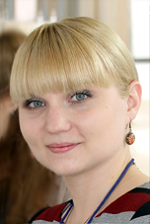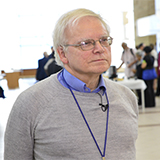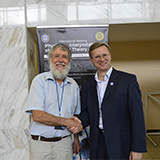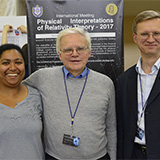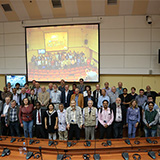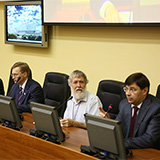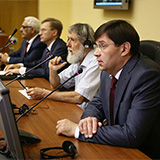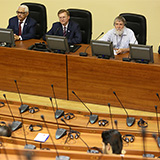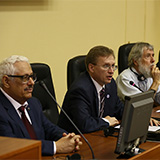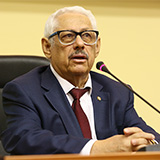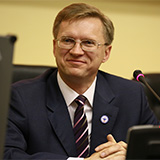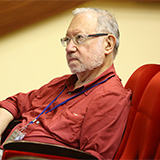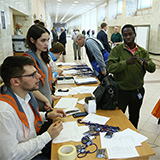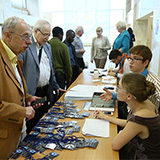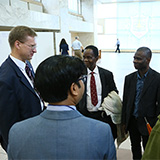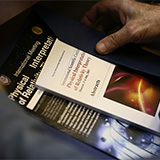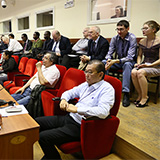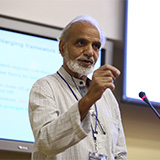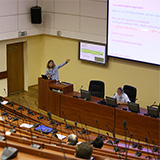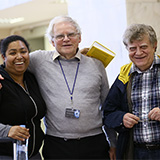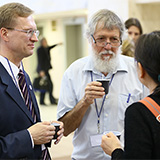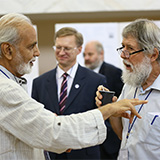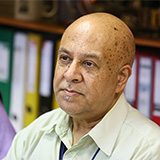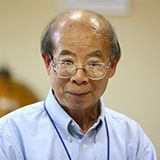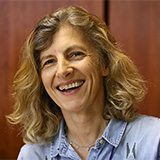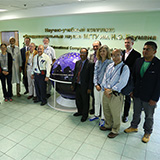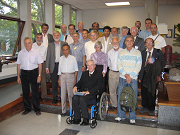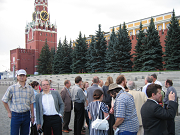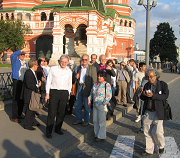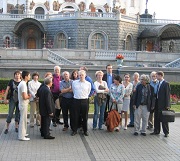
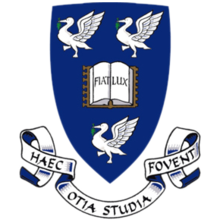
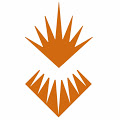
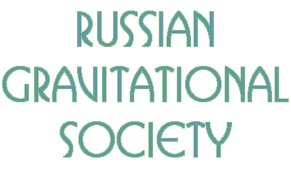

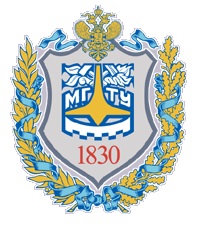
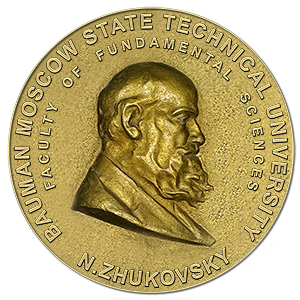

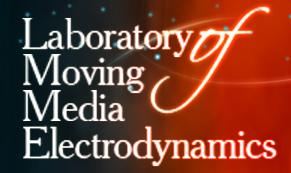
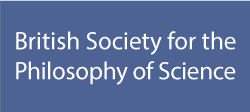
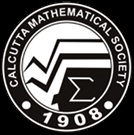


Bauman Moscow State Technical University
5, 2-nd Baumanskaya street, Moscow, 105005 Russia
–•–• International Meeting
Physical Interpretations of Relativity Theory - 2017
03-06 July 2017
Moscow, Rubtsovskaya nab., 2/18- Video
- Photos
- International Organizing Committee
- Academician Committee
- Invited Speakers
- Important dates
- Foundation Support
- Informing Letters
- Participants
- General program
- Scientific program
- Preliminary list of talks, including plenary and poster
- BMSTU
- Laboratory Building of BMSTU
- Department of Physics
- Transport to BMSTU
- Accommodation
- Registration Fee
- Auditorium
- Permission, visa
- Invitation
- Cultural program
- Meal
- Translation (Interpretation)
- Moscow PIRT Proceedings
- Format for abstracts and papers
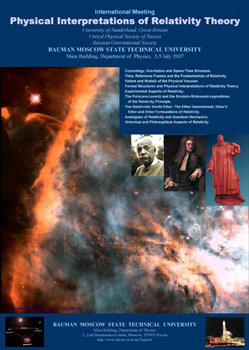
Video
Photos
International Organizing Committee
- Prof. A.A. Aleksandrov (Chairman), Bauman MSTU, Moscow, Russia
- Prof. V.O. Gladyshev (Co-Chairman), Bauman MSTU, Moscow, Russia
- Prof. P. Rowlands (Co-Chairman), University of Liverpool, Liverpool, United Kingdom
- Prof. Dr. M. R. Adhikari, University of Calcutta, IMBIC, International Egyptian Engineering Mathematical Society, Institute for Polymath, India
- Prof. J.B. Almeida, University of Minho, Physics Department, Braga, Portugal
- Prof. D. Blair, University of South Western Australia, Australia
- Prof. A. Giazotto, INFN - Sezone di Piza, Pisa, Italia
- Prof. G. Pizzella, Physics Department, University of Rome, Rome, Italy
- Prof. G.M. Webb, Commercial Space Technologies Ltd., London, Great Britain
- Prof. N. Stergioulas, Department of Physics Aristotle University of Thessaloniki 54124 Thessaloniki, Greece
- Prof. A.P. Fournier-Sikr, European Space Agency, France
- Prof. M.C. Duffy, University of Sunderland, Sunderland, British Society for the Philosophy of Science, United Kingdom
- Prof. H.P. Mazumdar, Physics and Earth Sciences Division, Indian Statistical Institute, Kolkata, India
- Prof. E. Mychelkin, Fesenkov Astrophysical Institute NAS RK, Almaty, Kazakhstan
- Prof. G.Yu. Bogoslovsky, Skobeltsyn Institute of Nuclear Physics, Lomonosov Moscow State University, Russia
- Prof. Yu.S. Vladimirov, Lomonosov Moscow State University, Moscow, Russia
- Prof. G.N. Izmailov, Moscow Aviation Institute, Moscow, Russia
- Prof. V.O. Manturov, Bauman MSTU, Moscow State University, Moscow, Russia
- Prof. V.N. Melnikov, Centre for Gravitation and Fundamental Metrology, VNIIMS and Institute of Gravitation and Cosmology, Peoples' Friendship University of Russia, Moscow, Russia
- Prof. A.N. Morozov, Bauman MSTU, Moscow, Russia
- Prof. V.N. Rudenko, Sternberg State Astronomical Institute, Lomonosov Moscow State University, Moscow, Russia
- Prof. S.V. Siparov, Academy of Civil Aviation, S.-Petersburg, Russia
- Prof. S.V. Chervon, Ulyanovsk State Pedagogical University, Ulyanovsk, Russia
- Prof. A.S. Chernikov, Bauman MSTU, Moscow, Russia
- Dr. N.D. Tyannikova (Scientific secretary), Bauman MSTU, Moscow, Russia
- Dr. Verberck Bart, Springer Nature, United Kingdom
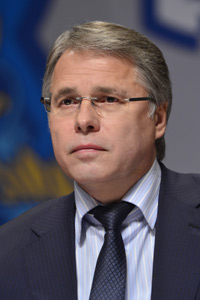
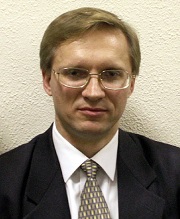
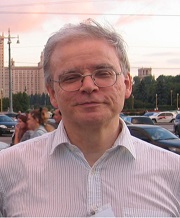
Academician Committee (International Advisory Council)
- Member of RAS, Prof. V.I. Pustovoit (Chairman), Russian Academy of Science, Bauman University, Russia
- Prof. A.N. Morozov (Co-Chairman), Bauman MSTU, Moscow, Russia
- Member of RAS, Prof. S.N. Bagaev, Institute of laser physics SB RAS, Novosibirsk, Russia
- Member of RAS, Prof. N.S. Kardashev, Astro Space Center of P.N. Lebedev Physical Institute of RAS, Russia
- Member of RAS, Prof. I.B. Fedorov, Bauman MSTU, Moscow, Russia
- Member of RAS, Prof. A.M. Cherepashchuk, Sternberg Astronomical Institute Moscow Russia
- Corr.-Member of RAS, Prof. N.N. Kolachevsky, P.N. Lebedev Physical Institute of RAS, Russia
- Corr.-Member of RAS, Prof. N.N. Rozanov, Saint Petersburg National Research University of Information Technologies, Mechanics and Optics; Vavilov State Optical Institute
- Prof. J.B. Almeida, University of Minho, Physics Department, Braga, Portugal
- Prof. A. Giazotto, INFN - Sezone di Piza, Pisa, Italia
- Prof. D. Blair, University of South Western Australia, Australia
- Prof. C. Bradaschia, IstitutoNazionale di FisicaNucleare INFN), e Laboratorio di FisicaSperimentale del dipartimento di Fisica, Universita di Pisa, S. Piero a Grado (Pisa) Italy
- Prof. M. Sakellariadou, King's College London, University of London, London, Great Britain
- Prof. P. Rowlands, University of Liverpool, Liverpool, United Kingdom
- Prof. R. Triay, Centre de Physique Theorique CNRS - University de Provence, Marseille, France
- Prof. J. Hough, Department of Physics and Astronomy, University of Glasgow, Glasgow, U.K.
- Prof. R. Weiss, Department of Physics, Massachusetts Institute of Technology, Cambridge, U.S.A.
- Prof. S. Whitcomb, Physics/LIGO laboratory, California Institute of Technology, Pasadena, U.S.A.
- Prof. N. Deruelle, Institut des Hautes Etudes Scientifiques, Bures sur Yvette, France
- Prof. G. Pizzella, Physics Department, University of Rome, Rome, Italy
- Prof. C. Romero, Universidade Federal da Paraiba, Departamento de Fisica, Joao Pessoa, Brazil
- Prof. H.P. Mazumdar, Physics and Earth Sciences Division, Indian Statistical Institute, Kolkata, India
- Prof. E. Mychelkin, Fesenkov Astrophysical Institute NAS RK, Almaty, Kazakhstan
- Prof. B.M. Bolotovskii, Lebedev Physical Institute of RAS, Moscow, Russia
- Prof. Yu.S. Vladimirov, Moscow State University, Moscow, Russia
- Prof. V.O. Gladyshev, Bauman MSTU, Moscow, Russia
- Prof. A.D. Dolgov, Institute of Theoretical and Experimental Physics of RAS, & INFN, Ferrara, Italy
- Prof. V.N. Lukash, Astro Space Center of P.N. Lebedev Physical Institute of RAS, Russia
- Prof. V.N. Melnikov, Centre for Gravitation and Fundamental Metrology, VNIIMS and Institute of Gravitation and Cosmology, Peoples' Friendship University of Russia, Moscow, Russia
- Prof. V.N. Rudenko, Sternberg State Astronomical Institute, Lomonosov Moscow State University, Moscow, Russia
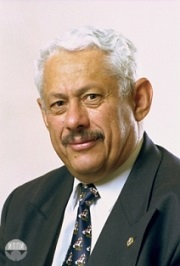
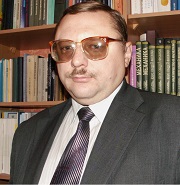
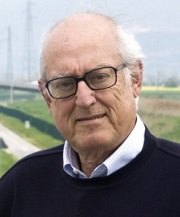
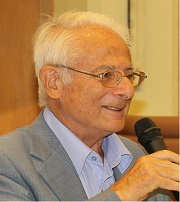
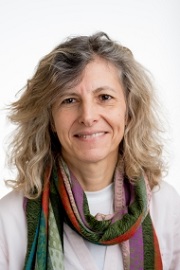
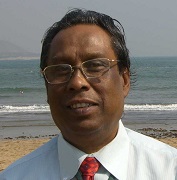
Invited Speakers
- Adhikari M. Spectral Homology and Cohomology Theories. This study is from the view point of topology
University of Calcutta, IMBIC, International Egyptian Engineering Mathematical Society, Institute for Polymath, India - Blair D. Creating physical interpretations of EinsteinвАЩs relativity for universal education in the era of gravitational wave astronomy
Australian International Gravitational Research Centre, University of Western Australia, Australia - Kauffman L. Braiding, Majorana Fermions and the Dirac Equation
University of Illinois at Chicago, United States - Pustovoit V. Laser interferometers to detect gravitational waves and proposals for improving their accuracy
Russian Academy of Science, Bauman University, Russia - Sakellariadou M. Unweaving the fabric of the Universe
King's College London, University of London, Great Britain - Stergioulas N. Gravitational Wave Asteroseismology and Binary Neutron Star Mergers
Aristotle University of Thessaloniki, Greece
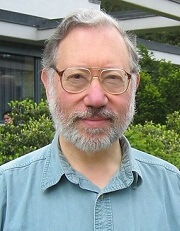
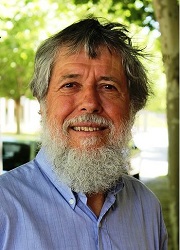
Important dates
Registration вАУ March 1, 2017
Submission of Abstracts вАУ April 1, 2017
Submission of Papers вАУ May 1, 2017
Foundation Support
- UK Science and Innovation Network (SIN-Russia), British Embassy in Moscow
- Russian Foundation for Basic Research (RFBR)
- Nature Physics
- The State Duma Committee on Education of the Russian Federation
- Department of Physics, University of Liverpool, Great Britain
- S.C.&T., University of Sunderland, Great Britain
- Russian Gravitational Society
- Moscow Physical Society
- The International Society on General Relativity & Gravitation
- British Society for the Philosophy of Science
- Calcutta Mathematical Society
First informing letter
Participants on March 1, 2017
- Adhikari Avishek, Calcutta University, India
- Adhikari M. R., University of Calcutta, IMBIC, International Egyptian Engineering Mathematical Society, Institute for Polymath, India
- Aliev Ismail, Bauman University, Russia
- Amoroso Richard, Noetic Advanced Studies Institute, United States
- Animalu A.O., University of Nigeria, Nigeria
- Antonyuk Pavel, Bauman University, Russia
- Avramenko Arkady, P. N. Lebedev Physical Institute of RAS, Russia
- Bagaev Sergei, Institute of laser physics SB RAS, Russia
- Balan Vladimir, University Politehnica of Bucharest, Romania
- Baranov Alexandre, Krasnoyarsk State Pedagogical University named after V.P. Astaf'ev, Russia
- Bazleva Daria, Bauman University, Russia
- Beesham A., University of Zululand, South Africa
- Berezin Victor, Institute for Nuclear Research, Russian Academy of Sciences, Russia
- Blair David, Australian International Gravitational Research Centre, University of Western Australia, Australia
- Bogdanova Sophie, Moscow Aviation Institute (National Research University), Russia
- Bogoslovsky George, Skobeltsyn Institute of Nuclear Physics, Lomonosov Moscow State University, Russia
- Brandyshev Petr, Moscow State Pedagogical University, Russia
- Bronnikov Kirill, Institute of gravitation and cosmology, PeoplesвАЩ Friendship University of Russia, Russia
- Budnev N.M., Institute of Applied Physics of Irkutsk State University, Russia
- Bukhman Nikolay, Samara State Technical University, Russia
- Bulyzhenkov Igor, Moscow Institute of Physics and Technology, Russia
- Burinskii Alexander, Nuclear Safety Institute of the Russian Academy of Sciences, Russia
- Cameron Wong, USA
- Chelnokov Michael, Bauman University, Russia
- Cherepashchuk Anatoly, Sternberg Astronomical Institute of Moscow State University, Russia
- Chengjie Yu, Shantou University, China
- Chervon Sergei, Ulyanovsk State Pedagogical University, Russia
- Dadhich Naresh, IUCAA, PUNE, India
- Dainton John, Liverpool University, Great Britain
- Darvas Gy√ґrgy, Symmetrion, Hungary
- de Haan Victor, Bon Physics Research and Investigations BV, Netherlands
- Dokuchaev Vyacheslav, Institute for Nuclear Research of the Russian Academy of Sciences, Russia
- Domínguez Paulino, University of Guadalajara, México
- Dominis Prester Predrag, University of Rijeka, Croatia
- Dubrovich Victor, SAO RAS, Russia
- Dumin Yurii, Sternberg Astronomical Institute, Lomonosov Moscow State University, Russia
- Edeagu S., University of Nigeria, Nigeria
- Emelianova Natalia, University Federal do ABC, Brasil
- Eroshenko Yury, Institute for Nuclear Research of the Russian Academy of Sciences, Russia
- Fedorov Igor, Bauman University, Russia
- Filatov Vladimir, Bauman University, Russia
- Fil'chenkov Michael, Institute of Gravitation and Cosmology, Peoples' Friendship University of Russia, Russia
- Fisenko Stanislav, Moscow state linguistic University, Russia
- Fomin Igor, Bauman University, Russia
- Fournier-Sikr A.P., European Space Agency, France
- Galaev Sergei, Saratov State University, Russia
- Garat Alcides, Universidad de la Republica, Uruguay
- Gasimov Naghi, Cukurova University, Institute of Natural and Applied Sciences, Turkey, Adana
- Giazotto Adalberto, National Institute for Nuclear Physics - Section of Pisa, Italia
- Gladkov Sergey, Moscow aviation institute, Russia
- Gladyshev Vladimir, Bauman University, Russia
- Godfrey Ejiroghene Akpojotor, University of Nigeria, Nigeria
- Gorelik Vladimir, Bauman University, Russia
- Gorohov J.V., Pushkov Institute of Terrestrial Magnetism, Ionosphere and Radio Wave Propagation, Russian Academy of Sciences, Russia
- Grushevskaya Halina, Belarusian State University, Belarus
- Hajra Sankar, Indian Physical Society, India
- Il'ichov Leonid, Novosibirsk State University, Russia
- Isaeva Elmira, Institute of Physics of Azerbaijan Academy of Sciences, Azerbaijan
- Izmailov George, Moscow Aviation Institute, Russia
- Kalandadze Ruslan, Space Research Institute of the Russian Academy of Sciences (IKI), Russia
- Kamalov Timur, Moscow Institute of Physics and Technology, Russia
- Karam Sabah, Morgan state University, United States
- Kardashev Nikolai, Astro Space Center of P.N. Lebedev Physical Institute of RAS, Russia
- Kassandrov Vladimir, Institute of Gravitation and Cosmology, Peoples' Friendship University of Russia, Russia
- Kauffman Louis , University of Illinois at Chicago, United States
- Kauts Vladimir, Bauman University, Russia
- Kerner Richard, University Pierre et Marie Curie, Paris VI, France
- Khusnutdinov Nail, University Federal do ABC, Brasil
- Kiktenko E.O., Bauman University, Russia
- Kirillov Alexandr, Bauman University, Russia
- Kodukula Siva Prasad, India
- Konstantinov Mikhail, Bauman University, Russia
- Korogodina E.V., Bauman University, Russia
- Korotaev Sergey, Bauman University, Russia
- Koryukin A.V., Kazan Federal University, Russia
- Koryukin Valery, Mari State University, Russia
- Krylova Nina, Belarusian State University, Belarus
- Krysanov Vladimir, Institute for Nuclear Research RAS, Russia
- Kudriavtcev Iurii, Russia
- Laptev Yuri, Institute of Gravitation and Cosmology, Peoples' Friendship University of Russia, Russia
- Lebedev Yuri, Bauman University, Russia
- Levin Sergey, Moscow Institute for expertise and tests, Russia
- Lim Siow Jin, DXN Institute, Malaysia
- Lipkin Arkadii, Moscow Institute of Physics and Technology (State University), Russia
- Litvinov Dmitry, Sternberg Astronomical Institute, Moscow State University, Russia
- Liu Jian-Liang, Shantou University, China
- Lukanenkov Alexander, Russia
- Masood-ul-Alam Abul Kasem Muhammad, Tsinghua University, China
- Mayburov Sergey, P. N. Lebedev Physical Institute of RAS, Russia
- Mazumdar H.P., Physics and Earth Sciences Division, Indian Statistical Institute, India
- Meierovich Boris, P.L.Kapitza Institute for Physical Problems, Russia
- Melnikov V.N., Centre for Gravitation and Fundamental Metrology, VNIIMS and Institute of Gravitation and Cosmology, Peoples' Friendship University of Russia, Russia
- Mishra Bivudutta, Department of Mathematics, BITS-Pilani, Hyderabad Campus, India
- Monakhov Vadim, Saint Petersburg State University, Russia
- Mordvinov Boris, Russian Federal Nuclear Center - Institute Of Technical Physics, Russia
- Mornev Oleg A., Institute of Theoretical and Experimental Biophysics, Russia
- Morozov Andrei, Bauman University, Russia
- Munera Hector A., International Centre Physics, Colombia
- Ng Y. Jack, University of North Carolina, USA
- Nikitin Aleksandr, Russia
- Olkhov Oleg, N.N . Semenov Institute of Chemical Physics, Russia
- Orekhova D.A., Geoelectromagnetic Research Centre of Schmidt Institute of Physics of the Earth, Russian Academy of Sciences, Russia
- Pashchenko Denis, Russia
- Pavlov Alexander, Moscow State Agricultural University, Russia
- Pavlov Dmitriy, The Research Institute of Hypercomplex Systems in Geometry and Physics, Russia
- Pawar Dnyaneshwar, Swami Ramanand Teerth Marathwada University, India
- Petrov Alexander, Sternberg Astronomical Institute, Lomonosov Moscow State University, Russia
- Petrova Ludmila, Moscow State University, Russia
- Pizzella Guido, University of Rome, Italy
- Portnov Dmitriy, Bauman University, Russia
- Pradhan Anirudh, Institute of Applied Sciences & GLA University, India
- Pustovoit Vladislav, Bauman University, Science Technological Center of Unique Instruments of RAS, Russia
- Ray Pratik Premadarshi, Department of Mathematics, BITS Pilani Hyderabad Campus, India
- Rist Joann Sydney, University of Liverpool, Great Britain
- Romero Carlos, Universidade Federal da Paraiba, Departamento de Fisica, Brazil
- Rowlands Peter, University of Liverpool, United Kingdom
- Rubio Marcelo Enrique, Facultad de Matematica, Astronomia y Fisica - Universidad Nacional de Crdoba, Argentina
- Rudenko V.N., Sternberg State Astronomical Institute, Lomonosov Moscow State University, Russia
- Ryabov V.A., Moscow Aviation Institute, Russia
- Rylov Yuri, Institute for Problems in Mechanics Russian Acaemy of Sciences, Russia
- Sakellariadou Mairi, King's College London, University of London, Great Britain
- Samanta Gauranga Charan, Birla Institute of Technology and Science Pilani Goa Campus, India
- Samedova Zarifa, Bauman University, Russia
- Sanduk Mohammed, University of Surrey, Great Britain
- Savelova Elena, Bauman University, Russia
- Sazhin Mikhail, Sternberg Astronomical Institute, Lomonosov Moscow State University, Russia
- Sazhina Olga, Sternberg Astronomical Institute, Lomonosov Moscow State University, Russia
- Serdyuk V.O., Geoelectromagnetic Research Centre of Schmidt Institute of Physics of the Earth, Russian Academy of Sciences, Russia
- Shamir Muhammad Farasat, National University of Computer and Emerging Sciences, Pakistan
- Sharandin Evgeniy, Bauman University, Russia
- Shestakov Yury, The Russian center of science ¬ЂKurchatovsky institute¬ї, Russia
- Shishanin Andrei, Bauman University, Russia
- Shoemaker David, LIGO Laboratory, Massachusetts Institute of Technology, U.S.A.
- Silagadze Zurb, Budker Institute of Nuclear Physics and Novosibirsk State University, Russia
- Siparov Sergey, State University of Civil Aviation, Russia
- Skripnik F.V., Bauman University, Russia
- Stepanova Tatyana, Peter the Great St.Petersburg Politechnic University, Russia
- Stergioulas Nikolaos, Aristotle University of Thessaloniki, Greece
- Strunyn Andrey, Bauman University, Russia
- Sushkov Sergey, Kazan Federal University, Russia
- Tabolenko V.A., Institute of Applied Physics of Irkutsk State University, Russia
- Taganov Igor, International Interdisciplinary Research Project, Russia
- Tarai Sankarsan, Birla Institute of Technology and Science, India
- Timchenko S.L., Bauman University, Russia
- Tomilin Konstantin, S.I.Vavilov Institute for the History of Science and Technology, Russia
- Trell Erik, Link√ґping, University, Sweden
- Tripathy S. K., Indira Gandhi Institute of Technology, Sarang, India
- Tskhovrebov A.M., Moscow Aviation Institute, Russia
- Unal Nuri, Akdeniz University, Turkey
- Vargashkin Vladimir, Oryol State University named after I.S.Tourguenev, Russia
- Verberck Bart , Springer Nature, United Kingdom
- Viahhi Elena, Peter the Great St.Petersburg Politechnic University, Russia
- Vladimirov Yuriy, Moscow State University, Russia
- Webb G.M., Commercial Space Technologies Ltd., Great Britain
- Weiss Rainer, Massachusetts Institute of Technology, U.S.A.
- Whitcomb S., Physics/LIGO laboratory, California Institute of Technology, U.S.A.—Б
- Xie Naqing, Fudan University, China
- Yurasov Nikolay, Bauman University, Russia
- Yurasova Irina, Bauman University, Russia
- Zadorozhnyi N.A., Bauman University, Russia
- Zarikas Vasilios, School of Engineering Central Greece University of Applied Sciences Lamia GR, AND Nazarbayev University, Astana KZ, Greece
- Zherikhina L.N., Moscow Aviation Institute, Russia
- Zhogin Ivan, Burevestnik, Russia
- Zhotikov V.G., "Moscow Institute for Physics and Technology", Russia
- Zurbanov V.L., Institute of Applied Physics of Irkutsk State University, Russia
General program
Scientific program
Preliminary list of talks, including plenary and poster
- Adhikari Avishek , Visual Cryptograpy and DNA Secret Sharing: Two Simple ways to Store Secret Information in a Secure Way.
Calcutta University, India - Adhikari M. R. , Spectral Homology and Cohomology Theories.
University of Calcutta, IMBIC, International Egyptian Engineering Mathematical Society, Institute for Polymath, India - Aliev Ismail, Samedova Zarifa, Optical-mechanical analogy and quantum trajectory.
Bauman University, Russia - Amoroso Richard, Ontological-Phase Topological Field Theory: Einstein/Newton Duality.
Noetic Advanced Studies Institute, United States - Animalu A.O., Edeagu S., Trell E., Godfrey Ejiroghene Akpojotor, Semiology of Linguistics and Geometric Lie Algebra Foundation of Atomic Structure and Periodic System.
University of Nigeria, Nigeria - Antonyuk Pavel, Extreme ball which is limited by extreme sphere.
Bauman University, Russia - Antonyuk Pavel, The electromagnetic wave in Wien's displacement law.
Bauman University, Russia - Avramenko Arkady, The relativistic inertial coordinate reference frames, synchronized the observed radio emission of pulsar.
P.N. Lebedev Physical Institute of RAS, Russia - Baranov Alexandre, Models of the open Universe as analogues of multidimensional electric capacitances.
Krasnoyarsk State Pedagogical University named after V.P. Astaf'ev, Russia - Beesham A., Vaidya Collapse with nonzero radial pressure.
University of Zululand, South Africa - Berezin Victor, Dokuchaev V.I., Eroshenko Yu.N. , Phenomenoogy of cosmological particle creation, Direc sea and all that.
Institute for Nuclear Research, Russian Academy of Sciences, Russia - Blair David, Creating physical interpretations of EinsteinвАЩs relativity for universal education in the era of gravitational wave astronomy.
Australian International Gravitational Research Centre, University of Western Australia, Australia - Bogoslovsky George, The rest momentum as an additional property of a massive particle in Finsler space-time.
Skobeltsyn Institute of Nuclear Physics, Lomonosov Moscow State University, Russia - Brandyshev Petr, Inflation, superstrings and hidden time-like dimensions.
Moscow State Pedagogical University, Russia - Bukhman Nikolay, Principle of Causality, Non-Anthropogenous Forecasting and Superluminal Velocity of Propagation of a Signal.
Samara State Technical University, Russia - Bulyzhenkov Igor, Heat contributes to dynamics of Einstein-Infeld fields.
Moscow Institute of Physics and Technology, Russia - Burinskii Alexander, Weakness of gravity as the illusion hiding a true way to physics of elementary particles.
Nuclear Safety Institute of the Russian Academy of Sciences, Russia - Chelnokov Michael, Inversion of time and temporal chaos of the Universe.
Bauman University, Russia - Chervon Sergei, Cosmology from Modified Gravity.
Ulyanovsk State Pedagogical University, Russia - Dadhich Naresh, Understanding General Relativity after 100 years: a novel perspective.
IUCAA, PUNE, India - Dainton John, Maxwell's Second Smoking Gun, Local gauge theory, and its Classical Implementation.
Liverpool University, Great Britain - Darvas Gy√ґrgy, Hypersymmetry of gravitational and inertial masses in relativistic field theories.
Symmetrion, Hungary - Dokuchaev Vyacheslav, Berezin V.A., Eroshenko Yu.N. , Global geometry of the Vaydya metric.
Institute for Nuclear Research of the Russian Academy of Sciences, Russia - Domínguez Paulino, Super-Poynting vector and comoving observers in the Einstein-Rosen spacetime.
University of Guadalajara, México - Dominis Prester Predrag, Induced actions for higher spin fields.
University of Rijeka, Croatia - Dubrovich Victor, Gravitational-Axion telescope.
SAO RAS, Russia - Dumin Yurii, Local Hubble Expansion: Current State of the Problem.
Sternberg Astronomical Institute, Lomonosov Moscow State University, Russia - Eroshenko Yury, Gravitational waves from primordial black holes collisions in binary systems.
Institute for Nuclear Research of the Russian Academy of Sciences, Russia - Filatov Vladimir, Gorelik V., The Resonance ќ≥+ќ≥вЖТpќ≥ Conversion in the f-block of the Periodic Table.
Bauman University, Russia - Fil'chenkov Michael, Laptev Yuri, Field Interpretation of General Relativity.
Institute of Gravitation and Cosmology, Peoples' Friendship University of Russia, Russia - Fisenko Stanislav, To the issue of reconciling quantum mechanics and General relativity.
Moscow state linguistic University, Russia - Fomin Igor, Exact inflation with a Gauss-Bonnet correction.
Bauman University, Russia - Galaev Sergei, Prolonged almost AP-structures in unified theory of gravitational and electromagnetic interactions.
Saratov State University, Russia - Gasimov Naghi, Some aspects of mass-energy equivalence which appears in negative refractive index metamaterials.
Cukurova University, Institute of Natural and Applied Sciences, Turkey, Adana - Gladkov Sergey, To the question on common field theory.
Moscow aviation institute, Russia - Gladyshev Vladimir, Pustovoit Vladislav, Gorelik Vladimir, Morozov Andrei, Kauts Vladimir, Sharandin Evgeniy, Fomin Igor, Portnov Dmitriy, Generation and detection of high-frequency gravitational waves at intensive external excitation.
Bauman University, Russia - Gorelik Vladimir, Laser excitation of bound photonic states in dielectrics.
Bauman University, Russia - Grushevskaya Halina, Krylova Nina, A geometrothermodynamics of gravitating system with axially symmetric metric.
Belarusian State University, Belarus - Hajra Sankar, Confirmation of SR, GR and GW by experiments.
Indian Physical Society, India - Il'ichov Leonid, Probabilities in the topos approach to branching space-time.
Novosibirsk State University, Russia - Isaeva Elmira, Rational Thinking and Reasonable Thinking in Physics: The EinsteinвАЩs Relativity Theory as achievement of reasonable thinking.
Institute of Physics of Azerbaijan Academy of Sciences, Azerbaijan - Izmailov George, Gorelik Vladimir, Applications of paramagnetics for photon-axion conversion.
Moscow Aviation Institute, Russia - Izmailov George, Ryabov V.A., Tskhovrebov A.M., Zherikhina L.N., Two methods for a search of a magnetic monopole: a dynamic scheme вАУ SQUID-magnetic calorimeter and a static scheme вАУ SQUID-magnetostrictor.
Moscow Aviation Institute, Russia - Izmailov George, Tskhovrebov A.M., Zherikhina L.N., The Compact High Sensitive System SQUID - magnetostrictor: the Possibility of Developing a Phased Array for Gravitational Waves Registration .
Moscow Aviation Institute, Russia - Kamalov Timur, Instability states and Ostrogradsky formalism .
Moscow Institute of Physics and Technology, Russia - Karam Sabah, Sakharov Curvature in Rowlands Duality-Spacetime .
Morgan state University, United States - Kassandrov Vladimir, Holographic origin of the space-time geometry.
Institute of Gravitation and Cosmology, Peoples' Friendship University of Russia, Russia - Kauffman Louis, Braiding, Majorana Fermions and the Dirac Equation.
University of Illinois at Chicago, United States - Kauts Vladimir, Gladyshev Vladimir,Bazleva Daria ,Strunyn Andrey, Relativistic test of moving media electrodynamics through the Luneberg lens.
Bauman University, Russia - Kerner Richard, Quantum physical origin of Lorentz transformations.
University Pierre et Marie Curie, Paris VI, France - Khusnutdinov Nail, Emelianova Natalia, Radiation of particle in wormhole spacetime.
University Federal do ABC, Brasil - Kirillov Alexandr, Stable cosmological wormholes.
Bauman University, Russia - Konstantinov Mikhail, Lorentz Invariance, Causality and Topology of Space-Time: New Questions and Problems.
Bauman University, Russia - Korotaev Sergey, Budnev N.M., Serdyuk V.O., Kiktenko E.O., Zurbanov V.L., Gorohov J.V., Orekhova D.A. , Tabolenko V.A., Macroscopic entanglement and time reversal causality by data of the Baikal experimentl.
Bauman University, Russia - Koryukin Valery, Koryukin A.V., вАЬGhostsвАЭ and the Big Bang theory.
Mari State University, Russia - Krysanov Vladimir, Non-stationary Noise Sources in an Optoacoustical Gravitational Antenna.
Institute for Nuclear Research RAS, Russia - Kudriavtcev Iurii, Paradoxes of Quantum Theory from the viewpoint of the Special Relativity.
Russia - Kudriavtcev Iurii, On historical aspect of The Big Bang cosmological model appearance.
Russia - Lebedev Yuri, On the question of everettical mechanism of formation of the Future from the Past.
Bauman University, Russia - Levin Sergey, Anisotropy excess of red shift for supernovae type SN Ia.
Moscow Institute for expertise and tests, Russia - Lim Siow Jin, Metric tensors for eletromagnetic fields.
DXN Institute, Malaysia - Litvinov Dmitry, RadioAstron gravitational redshift test.
Sternberg Astronomical Institute, Moscow State University, Russia - Liu Jian-Liang, Chengjie Yu, Quasi-local energy and the application on the Kerr spacetime.
Shantou University, China - Lukanenkov Alexander, Experimental confirmation of the doubt about authenticity of the event GW150914.
Russia - Lukanenkov Alexander, Gravitational experiments. Interpretation issues.
Russia - Masood-ul-Alam Abul Kasem Muhammad, The variable PlanckвАЩs constant due to imaginary gravitational temperature.
Tsinghua University, China - Mayburov Sergey, Commutative Fuzzy Geometry, Quantization and Space-time.
P.N. Lebedev Physical Institute of RAS, Russia - Meierovich Boris, Motion in a central field with account of dark matter.
P.L.Kapitza Institute for Physical Problems, Russia - Melnikov V.N. , –Ь–љ–Њ–≥–Њ–Љ–µ—А–љ—Л–µ –Љ–Њ–і–µ–ї–Є –≥—А–∞–≤–Є—В–∞—Ж–Є–Є –Є –Ї–Њ—Б–Љ–Њ–ї–Њ–≥–Є–Є.
Centre for Gravitation and Fundamental Metrology, VNIIMS and Institute of Gravitation and Cosmology, Peoples' Friendship University of Russia, Russia - Mishra Bivudutta, An Accelerating Dark Energy Model with Hybrid Scale Factor.
Department of Mathematics, BITS-Pilani, Hyderabad Campus, India - Monakhov Vadim, Superalgebraic structure of Lorentz transformations.
Saint Petersburg State University, Russia - Mordvinov Boris , On the structure of dark matter particles.
Russian Federal Nuclear Center - Institute Of Technical Physics, Russia - Munera Hector A., Absolute velocity of earth from our stationary Michelson-Morley-Miller experiment at CIF, Bogota, Colombia.
International Centre Physics, Colombia - Munera Hector A., General relativity and gravity as part of a unified fluid and field theory.
International Centre Physics, Colombia - Nikitin Aleksandr, GRT experiment: Supernova SN1987A.
Russia - Olkhov Oleg, Geometrical interpretation of time.
N.N. Semenov Institute of Chemical Physics, Russia - Pavlov Alexander, Exact solutions of Friedmann equation for supernovae data.
Moscow State Agricultural University, Russia - Pavlov Alexander, The Basic Properties of the Field of Time.
Moscow State Agricultural University, Russia - Pavlov Dmitriy, The Basic Properties of the Field of Time.
The Research Institute of Hypercomplex Systems in Geometry and Physics, Russia - Pawar Dnyaneshwar, Bianchi Type Cosmological Models with Perfect Fluid and Dark Energy.
Swami Ramanand Teerth Marathwada University, India - Petrov Alexander, Spherically symmetric collapse to a point-like state.
Sternberg Astronomical Institute, Lomonosov Moscow State University, Russia - Petrova Ludmila, Connection the functionals of field-theory equations with the state functionals of equations of mathematical physics.
Moscow State University, Russia - Pustovoit Vladislav, Laser interferometers to detect gravitational waves, and proposals for improving their accuracy.
Bauman University, Science Technological Center of Unique Instruments of RAS, Russia - Ray Pratik Premadarshi, Mishra Bivudutta, Anisotropy in viscous fluid Dark Energy cosmological model.
Department of Mathematics, BITS Pilani Hyderabad Campus, India - Rist Joann Sydney, Rowlands Peter, Representations Of The Nilpotent Dirac Matrices.
University of Liverpool, Great Britain - Rubio Marcelo Enrique, On the ill posedness of Force-free Electrodynamics in Euler Potentials.
Facultad de Matematica, Astronomia y Fisica - Universidad Nacional de Crdoba, Argentina - Rudenko V.N., –†–µ–ї—П—В–Є–≤–Є—Б—В—Б–Ї–Є–µ –≥—А–∞–≤–Є—В–∞—Ж–Є–Њ–љ–љ—Л–µ —Н–Ї—Б–њ–µ—А–Є–Љ–µ–љ—В—Л –†–Р–Э –Є –Ь–У–£.
Sternberg State Astronomical Institute, Lomonosov Moscow State University, Russia - Rylov Yuri, Unification of classical mechanics and quantom mechanics in united conception of particle dynamics.
Institute for Problems in Mechanics Russian Acaemy of Sciences, Russia - Sakellariadou Mairi, Unweaving the fabric of the Universe.
King's College London, University of London, Great Britain - Samanta Gauranga Charan, Cosmological model in van der Waals fluid.
Birla Institute of Technology and Science Pilani Goa Campus, India - Sanduk Mohammed, A kinematical model interpretation of special relativity according to Dirac-like equation.
University of Surrey, Great Britain - Savelova Elena, Variable speed of light in vacuum.
Bauman University, Russia - Sazhina Olga, Sazhin Mikhail, Cosmic strings in the Universe: achievements and prospects.
Sternberg Astronomical Institute, Lomonosov Moscow State University, Russia - Shamir Muhammad Farasat, Accelerating Universe Models in f(G,T) Gravity.
National University of Computer and Emerging Sciences, Pakistan - Shestakov Yury, Particle in a gravitational field.
The Russian center of science ¬ЂKurchatovsky institute¬ї, Russia - Shestakov Yury, The Independent navigation and system of co-ordinates.
The Russian center of science ¬ЂKurchatovsky institute¬ї, Russia - Shishanin Andrei, Some solutions for scalar models and conformal invariance.
Bauman University, Russia - Silagadze Zurb, Radial acceleration relation and dissipative dark matter.
Budker Institute of Nuclear Physics and Novosibirsk State University, Russia - Siparov Sergey , Geometrical Aspects of Physical Theory.
State University of Civil Aviation, Russia - Skripnik F.V., Zadorozhnyi N.A., Korogodina E.V., Timchenko S.L. , Reflection and refraction electromagnetic waves at the dielectric surface: peculiarities interactions.
Bauman University, Russia - Stepanova Tatyana, Viahhi Elena, Properties of the Spatial-Temporary Continuum and Entropy.
Peter the Great St.Petersburg Politechnic University, Russia - Sushkov Sergey, The screening Horndeski cosmologies.
Kazan Federal University, Russia - Tarai Sankarsan, Bivudutta Mishra, Viscous fluid cosmological model in f(R, T) gravity.
Birla Institute of Technology and Science, India - Tomilin Konstantin, Yang-Mills equations and gauge coupling constants.
S.I.Vavilov Institute for the History of Science and Technology, Russia - Trell Erik, Edeagu S. Animalu A., Self-organized isotropic vector matrix translation apparatus for realization of the electron, nucleon, and periodic system.
Link√ґping, University, Sweden - Tripathy S. K., Late time cosmic acceleration and anisotropic dark energy.
Indira Gandhi Institute of Technology, Sarang, India - Unal Nuri, Unified spin connection for gravitation and electromagnetism.
Akdeniz University, Turkey - Vargashkin Vladimir , The analysis of frequency-independent jumps of CMB according to the Planck data.
Oryol State University named after I.S.Tourguenev, Russia - Vladimirov Yuriy, Gravitational interaction in geometrical and relational paradigms.
Moscow State University, Russia - Yurasov Nikolay, Yurasova Irina, Bosons and the black hole.
Bauman University, Russia - Zarikas Vasilios, Kofinas G., Phenomenological Aspects of Asymptotic Safe Gravity.
School of Engineering Central Greece University of Applied Sciences Lamia GR, AND Nazarbayev University, Astana KZ, Greece - Zhotikov V.G., Geometric interpretation of fildes end forces of inertia in the nature.
Moscow Institute for Physics and Technology, Russia
BMSTU
The history of our institution, the Bauman MHTS (Moscow Higher Technical School), or presently the Bauman MSTU (Moscow State Technical University) dates back to 1830, when Emperor Nicholas I confirmed the "statute of the industrial school" to open in Moscow. Russia's developing industry needed skilled labor in many trades. So, the aim of the new school was to train skillful artisans with a solid theoretical background to improve and spread skills in various trades all over Russia. The training personnel of the school comprised graduates of the Moscow University who specialized in mathematics, mechanics, physics and chemistry. By 1868 the academic standards of the school were so high that it was reorganized into a special institution of higher learning (Imperial Moscow Technical School or IMTS). Its major task now was to train mechanics in construction, engineering and manufacturing. The IMTS was financially supported by the Government and industrialists. Its management was democratic. Its teaching staff boasted of many talented scientists who maintained contacts with the West. All these circumstances helped the School to achieve outstanding successes in manufacturing processes and practices in the chemical, food and textile industries, metal and wood processing, and structural mechanics. During the 1876 Exhibition in Philadelphia the practically-minded Americans highly appreciated and admired the methods used by the School, recognizing them as an original "Russian system" of training engineers. In 1876, Dr. Wrinkle, President of the Boston Institute of Technology, writes to V.K.Dela-Vos, Director of the Imperial Moscow Technical School that Russia is a recognized leader in handling the important problems of engineering education, and that no other system will hence be used in America. IMTS system of handicraft education of engineers was recognized all over the world. ¬ЂRussian method¬ї became especially well-known after Vienna World Exhibition (1873) where it was awarded Big Gold Medal. IMTS was recognized the best machine-building education institution of Russia and joined the ranks of the world leading polytechnic schools. A lot of outstanding scientists taught in IMTS, such as D. Mendeleev, N. Jukovsky, P. Chebychev, S. Chaplygin, A. Yershov, D. Sovetkin, F. Dmitriev, A. Letnikov, A. Gavrilenko.
Thus, the Moscow Higher Technical School joined the ranks of "leading polytechnical schools in Europe".
The late 19th century witnessed quickening progress in electrical engineering, aeromechanics, and the power engineering industry.
In 1918, the MHTS organized several research institutes, including TSAGI (Central Aerodynamics and Hydrodynamics Institute), which eventually developed into independent structures, separating from their parent. The quick industrial expansion of the country called for new training facilities on other fields of science and technology. In 1930, the MHTS began to branch out into many new institutions of higher learning: the Moscow Aviation Institute, the Moscow Power Engineering Institute, the Military Chemical Academy, the Textile Institute, and the Moscow Civil Engineering Institute.
The MHTS continued to specialize in training engineers for the machine-building and instrumentation industries.
In 1938, the MHTS opened new departments with a defense profile: armoured vehicles and tanks, artillery, and ammunition. In 1948, a department of rocketry was added.
The following famous scientists and specialists have graduated our school: Academician A.N. Tupolev, S.P. Korolev, and many other aircraft and rocket designers and developers; Academician N.A. Dollezhal, chief designer of atomic piles; Academician A.I.Tselikov, chief designer of metallurgical engineering; Academician S.A.Lebedev, chief designer of computers.
Our School is distinguished for high-level scientific and engineering training of students, extensive relations with industries, good traditions, and high professional and moral requirements which both the professors and students feel obliged to meet and maintain.
In 1989, the MHTS was conferred a new name: the Bauman Moscow State Technical University (Bauman MSTU).
Pafnuty Lvovich Chebyshev (16 May 1821 вАУ 8 December 1894) was a Russian mathematician. Chebyshev is known for his work in the fields of probability, statistics, mechanics, and number theory. The Chebyshev inequality is used to prove the Weak Law of Large Numbers. Chebyshev is also known for the Chebyshev polynomials.
Dmitri Ivanovich Mendeleev(8 February 1834 вАУ 2 February 1907) was a Russian chemist and inventor. He formulated the Periodic Law, created his own version of the periodic table of elements, and used it to correct the properties of some already discovered elements and also to predict the properties of eight elements yet to be discovered.
Nikolay Yegorovich Zhukovsky (17 January 1847вАУ 17 March 1921) was a Russian scientist and a founding father of modern aero- and hydrodynamics. Whereas contemporary scientists scoffed at the idea of human flight, Zhukovsky was the first to undertake the study of airflow.
Sergei Pavlovich Korolev (12 January 1907 вАУ 14 January 1966) was the lead Soviet rocket engineer and spacecraft designer in the Space Race between the United States and the Soviet Union during the 1950s and 1960s. He is considered by many as the father of practical astronautics.
Vladimir Nikolayevich Chelomey (30 June 1914 вАУ 8 December 1984) was a Soviet mechanics scientist, aviation and missile engineer. He invented the very first Soviet pulse jet engine and was responsible for the development of the world's first anti-ship cruise missiles and ICBM complexes.
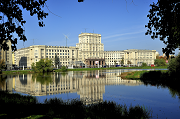
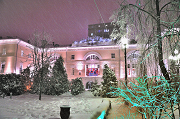
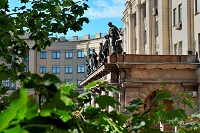
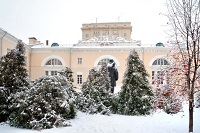
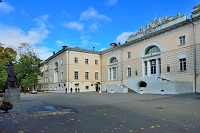
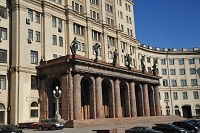
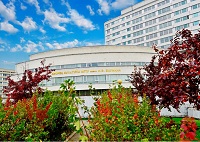
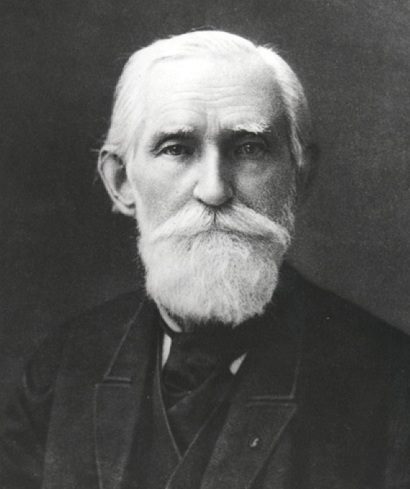
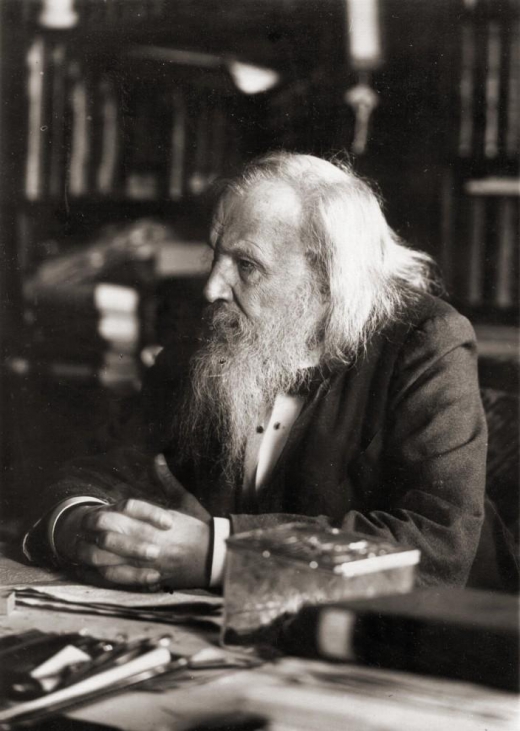

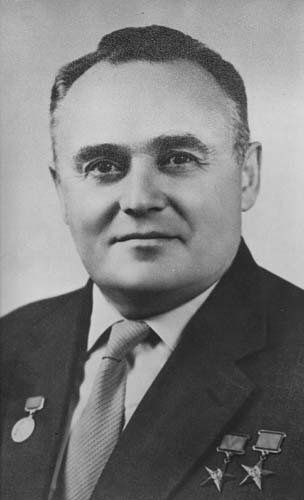
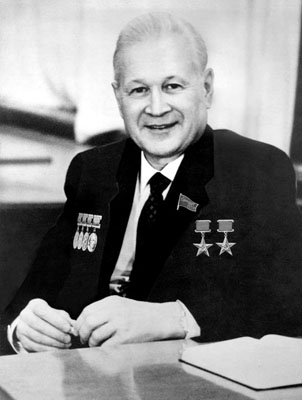
Laboratory Building of BMSTU
The Laboratory Building of BMSTU was opened in 2004.
At the opening ceremony Minister of Education Vladimir Filippov called it "a symbol of the RussiaвАЩs rebirth".
The total area of the 11-storey building is over 80 thousand sq. meters (equivalent of 11 football fields). 5 thousand students of all departments can have classes there simultaneously.
The building houses 100 lecture halls, 20 computer classrooms, 19 elevators, a library, which can store nearly 1 million books, a reading room for 700 visitors, a concert hall having almost 1,200 seats and a conference hall for 130 seats.
The Laboratory Building stands on the bank of the River Yauza and its similarity with a ship's hull explains its nickname, that is "an icebreaker".
The Fundamental Science Scientific and Training Complex (visit http://fn.bmstu.ru for the Russian version and http://fn.bmstu.ru/index.php/en - for the English version) is located on the 4th, 6th, 8th, 9th and 10th floors of the Laboratory Building as well as in the main building on 2nd Baumanskaya street.
The PIRT Conference has been held in the Conference Hall of the Laboratory Building since 2005.
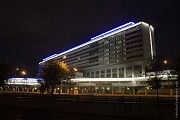
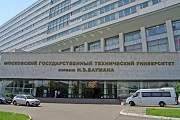
Department of Physics
Department of Physics of Bauman Moscow State Technical University (BMSTU) has worked since 1832, when Physical Study to demonstrate physical phenomena during lectures for students was created at the Craft Institution of Moscow Training House.
On the first June in 1968 the Craft Institution was reformed into Emperor Moscow Technical Specialized School and the Physical Study got a new official status as Department of General and Applied Physics. Professor A.S.Vladimirskii, who had graduated from Moscow University, headed the Department.
The brightest historical moments of the Department were linked with names of professor V.S.Shchegolyaev (the head of the Department since 1886 till 1912) and academician P.P.Lazarev (the head of the Department since 1912 till 1925).
At different times a number of remarkable scientists have worked at the Department: academician, president of USSR Science Academy S.I.Vavilov, corresponding-members of USSR Science Academy K.A.Krug and A.S.Predvoditelev, professors A.B.Mlodzievskii, A.K.Trapeznikov, A.V.Shpol'skii, N.E.Uspenskii, V.D.Zernov, K.A.Putilov.
At present the staff of the Department of Physics consists of 14 professors, 47 readers, 8 senior teachers and 7 professors, 15 readers, 7 senior teachers occupy private positions.
The main scientific directions of the Department of Physics are
- Electro-hydrodynamics (Prof. I.N. Aliev)
- Nonreversible process research in natural media. Theory of precise measurements. (Prof. A.N. Morozov, amor59@mail.ru)
- Electrodynamics of moving media; experimental tests of the relativity theory and electrodynamics (Prof. V.O. Gladyshev, dekan-fn@mail.ru)
- Applied electrodynamics and radio-physics (Prof. O.S. Litvinov)
- Theory of strength and destruction for solid bodies (Prof. V.N. Bovenko, (willian-2304@mail.ru)
- Optics and spectroscopy (Prof. V.S. Gorelik, gorelik@sci.lebedev.ru)
- Physical processes modeling in continuous media (Prof., Ph.D., the Winner of the State Prize of the USSR A.M. Makarov)
- Physics of high-temperature processes (Prof. V.V. Gorev, kafedra-fiziki@mail.ru)
- Methods of Computational Physics (Prof. M.F. Ivanov, ivanov_mf@mail.ru)
- Solid State Physics (Prof. B.E. Vintaykin)
- Laser Physics (Prof. N.F. Bunkin, nbunkin@kapella.gpi.ru)
- Semiconductor microwave technology (Prof. S.P. Babenko, babenkosvetlana@mail.ru)
- Electrodynamics of inhomogeneous media (Prof. S.M. Korotaev, korotaev@igemi.troitsk.ru)
- Terahertz technology, spectroscopy (Prof. S.O. Yurchenko, st.yurchenko@mail.ru)
- High energy astrophysics (Prof. V.L.Kauts, kauts@asc.rssi.ru)
- Early Universe models and an exact solutions of the Einstein equations (Prof. I.V. Fomin, ingvor@inbox.ru)
There is a laboratory for student researching at the Department of Physics.
Since 2001 the Department of Physics trains on the courses of bachelor and master degrees in Engineering Physics.
More detailed information can be obtained from the Head of BMSTU Department of Physics - A.N.Morozov (amor@mx.bmstu.ru).
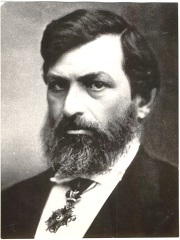
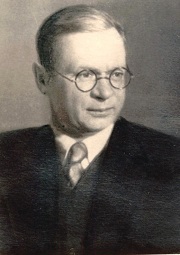
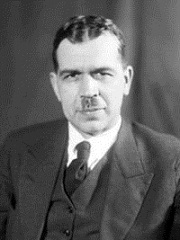
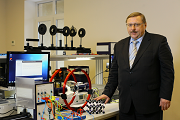
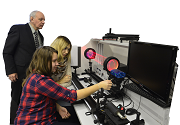
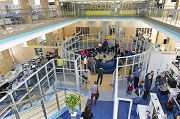
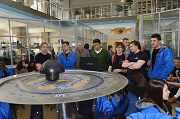
History of PIRT
The PIRT Conference is a four-day event held in September since 1988 at Imperial College in London and since 2003 at Bauman University in Moscow.
| Year | Imperial College, London, UK |
Bauman University, Moscow, Russia |
| 1988 | PIRT I | - |
| 1990 | PIRT II | - |
| 1992 | PIRT III | - |
| 1994 | PIRT IV | - |
| 1996, Sept. 6-9 | PIRT V | - |
| 1998, Sept. 11-14 | PIRT VI | - |
| 2000, Sept. 15-18 | PIRT VII | - |
| 2002, Sept. 6-9 | PIRT VIII | - |
| 2003, 30.06-03.07 | - | PIRT-2003 (XI) |
| 2004, Sept. 3-6 | PIRT IX | - |
| 2005, July 4-7 | - | PIRT-2005 (XII) |
| 2006, Sept. 8-11 | PIRT X | - |
| 2007, July 5-7 | - | PIRT-2007 (XIII) |
| 2008, Sept.12-15 | PIRT XIV | - |
| 2009, July 6-9 | - | PIRT-2009 (XV) |
| 2010, Sept. 10-13 | PIRT XVI | - |
| 2011, July 4-7 | - | PIRT-2011 (XVII) |
| 2013, July 1-4 | - | PIRT-2013 (XVIII) |
| 2015, 29.06-02.07 | - | PIRT-2015 (XIX) |
| 2017, July 3-6 | - | PIRT-2017 (XX) |
Initially the conference aimed to allow free communication for foreign scientists with scientists from the former Soviet Union. It was planned to hold a conference in Kazan University (Russia), where one of the founders of non-Euclidean geometry N.I. Lobachevsky used to work.
In 1988 the first PIRT conference was organized at Imperial College (London), where it is held every two years. The conference is notable for the freedom of scientific views, large reports (up to 40 min), Proceedings published and the participation of Russian scientists.
In 2003 the first PIRT conference was held at BMSTU in Moscow. The event was a success, and it was decided to hold a conference in Moscow every two years. The PIRT Conference was also held in Calcutta (India) and Budapest (Hungary).
The PIRT Conference features talks on multi-dimensional theory of gravity, gravitational-wave experiments, dark matter, cosmic microwave background, space anisotropy search, tests of the theory of relativity and electrodynamics.

PIRT-2007
PIRT-2009
Transport to BMSTU
How you can get to BMSTU from International Airport "Sheremetyevo-II" to metro station ¬ЂBaumanskaya¬ї (three variants):
- Take bus number 817 to the underground station ¬ЂPlanernaya¬ї (about 45 min., 21.5 km). Then go to the underground station ¬ЂTverskaya¬ї, then go to the underground station ¬ЂTeatral'naya¬ї, and go over to the underground station ¬ЂPloshchad' Revolyutsii¬ї, then go to the underground station ¬ЂBaumanskaya¬ї.
- Take bus number 851 to the underground station ¬ЂRechnoi Vokzal¬ї (about 43 min., 21.7 km). Then go to the underground station ¬ЂTeatral'naya¬ї, (about 21 minutes) and go over to the underground station ¬ЂPloshchad' Revolyutsii¬ї, then go to the underground station ¬ЂBaumanskaya¬ї.
- High-speed trains вАЬAeroexpressвАЭ depart from Sheremetyevo Airport to Belorussky Railway station every 20вАУ30 minutes. Travel time is 30вАУ40 minutes to the underground station ¬ЂBeloruskaiya¬ї. Then go to the underground station ¬ЂTeatral'naya¬ї, (about 7 minutes) and go over to the underground station ¬ЂPloshchad' Revolyutsii¬ї, then go to the underground st
From station ¬ЂBaumanskaya¬ї to BMSTU.
From station ¬ЂBaumanskaya¬ї walk to the Rubtsovskaya nab., 2/18 (about 15 minutes).
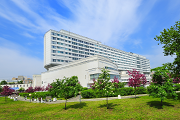
Accommodation
As BMSTU hasn't got a special hotel for guests, you can book a room by yourself in the hotel of Izmailovskii Tourist Complex.
The hotel is nearby the underground station "Partizanskaya" (3 stations from the underground station "Baumanskaya").
Address: 105187, Moscow, Izmailovskoye Shosse, 71, Bldg. 3V, "Vega" Complex.
(All information on http://www.hotel-vega.ru/)
Registration Fee
- For foreign participants - 150 EUR.
- The registration fee can be cash paid in during the conference in Moscow.
Payment on July, 3-rd 2017.
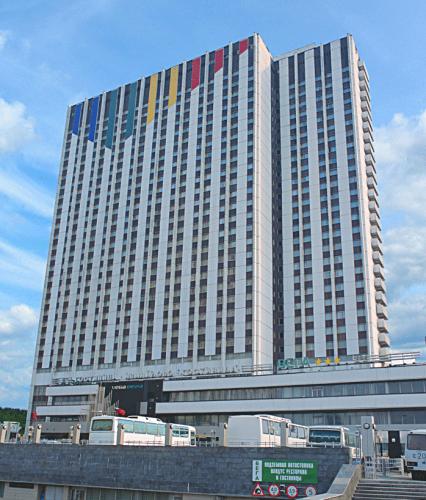
Auditorium
The Moscow PIRT-2017 will be held in the Study Laboratory Building of BMSTU, situated at the bank of river Yauza. Rubtsovskaya naberezhnaya 2/18.
The Hall is provided with modern equipments for presentations and has a system of synchronizing translation from Russian into English.
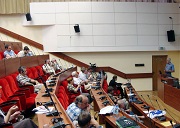
Permission, visa
To prepare the official Letter for Invitation for Russian Embassy in the other countries we need the following information from participants:
- first name, second name (or patronymic name), and surname;
- copy of passport (by e-mail or by fax);
- place of work (Institution, University, etc.). (If you haven't got any, please write down "housekeeper");
- address of work (Institution, University, etc.);
- position;
- dates of visiting Russia (arrival and departure);
- cities and towns to be visited (Moscow and others);
- date of birth;
- place of birth;
- dates of issue and expire of passport;
- city visa.
It is needed to have medical insurance when you visit Russia.
Invitation
- We will send to all participants of the conference letters of invitation to report by E-mail.
- If you need the letter will be set by mail or fax.
- For foreign participants Organizing Committee will preparethe official letters of invitation for the Russian Embassy.
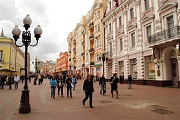
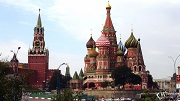
Cultural program
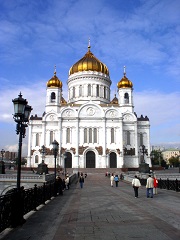
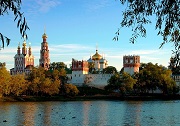
Meal
- Coffee breaks are planned between the reports.
- The time for coffee breaks and for lunch will be in programe of the Meeting.
- Participants can have lunch in the BMSTU professors' dinning room the main building (about 150 Rub. or 3-4 $).
- The Organizing Committee is planning to give a dinner party for participants.
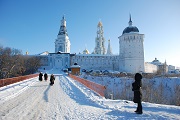
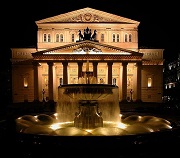
Translation (Interpretation)
- Russian and English are the working languages at the conference.
- The Organizing Committee can arrange interpretation for foreign participants during official parts of the Meeting (the opening and the closing of the Meeting, and reports) and excursions.
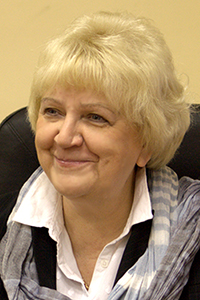
Moscow PIRT Proceedings
All the conference papers will be published in the Proceedings of the Moscow PIRT Meeting (ISSN 2309-7604), which will be submitted for inclusion into the Scopus database. It will be sent to all participants, in libraries, and will be available in electronic form on the conference website (www.pirt.info).
According to the results of the conference some papers will be selected for publishing in a separate issue of Journal of Physics: Conference Series (JPCS), which is included in Scopus and Web of Science database.
(http://iopscience.iop.org/journal/1742-6596))
The articles should be thoroughly revised and put into shape in according to requirements. The Proceedings will generally revised, therefore, the Organizing Committee keeps the rights for itself to use the special review of any article. In the case reviewers will be specialists of Leading Universities of Russia or aboard.








Preferred format for abstracts and papers
- The deadline for submitting abstracts - April 1, 2017.
- The deadline for submitting papers - August 1, 2017.
- Text of the paper should be issued in accordance with the sample (see The example of paper).
- The volume of abstracts is one page A4 format, the volume of the paper is 10 pages A4 format.
- Abstracts should be formed in English language in a separate file.
- Abstracts and papers should be formed in the format *.doc or *.docx and also you should send us a hard copy in PDF format.
- The paper should be issued in English as a separate file with some rules:
- The final edition of papers will be made in common style under checking of the Editorial Board, formed by Organizing Committee.
2. Margins are 4cm (top), 2.5cm (left and right) and 2.7cm (bottom).
3.The paper includes the author name and affiliation (full address including country).
4. There are no page numbers, or headers and footers, within the paper.
5. The PDF is free of formatting errors (e.g. corrupt equations, missing or low-resolution figures), since conversion from Word to PDF can introduce formatting errors.
6. Text is single spaced, not double spaced.
7. The PDF file is editable and not password protected.
8. All pages are portrait (landscape pages should be rotated).
9. Reference lists are checked for accuracy. References can only be linked via CrossRef if they are correct and complete.
10. Figures are placed within the text, not collected at the end of the document.
11. A thorough proofread is conducted to check the standard of English and ensure wording is clear and concise.
Registration finished
Contacts
For all questions related to the Conference PIRT- 2017, please contact:
dekan-fn@mail.ru.
Scientific Secretary of PIRT-2017: Dr. Tyannikova Nina (Bauman MSTU, Russia).
